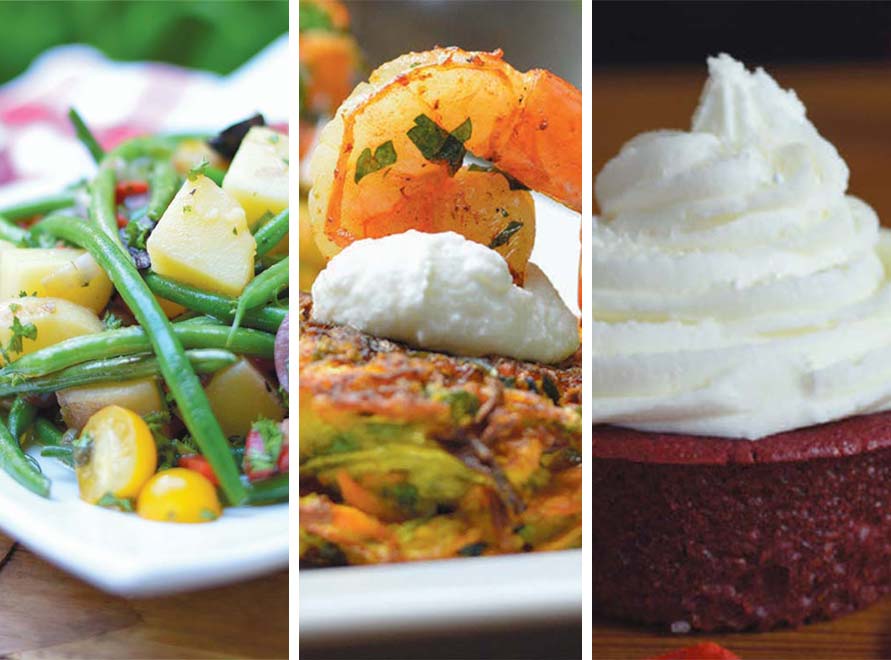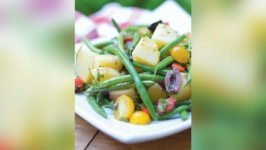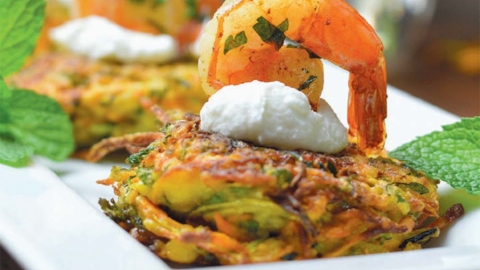Scoring a 'Victory' with Your Garden
Often the best dishes are created from ingredients you have on hand. Perhaps it’s because I had a restaurant for over 20 years, but using everything in the fridge and freezer was always my mantra. And when it comes to vegetable gardens, that same mantra holds true.
I learned some essential “use everything” tips early on in my career when I studied with the late Madame Liane Kuony of the Postilion School of Culinary Arts. On the fi rst day of class, we were served something Madame referred to as serendipity soup. After my new classmates fi nished cleaning their bowls, we of course asked for the recipe.
The diminutive Madame, who stood no more than fi ve feet and wore a hat almost as big as she was, informed us that there was no recipe. She used leftovers from the class conducted the previous week to prepare the soup. And what were those leftovers? Everything from delicate French crepes to fork-tender beef bourguignonne. And I wouldn’t be surprised if a little crème brulee was also in the mix.
With more time at home and less time at the grocery store, gardens have become more of a necessity than ever. Each week brings a new basketful of your personal ready-to-pick harvest. View the whole garden-to-table experience as your own make-believe television show. Call it Top Chef Backyard Garden Edition. And you’re the star.
NOT YOUR MOTHER’S VICTORY GARDEN
Early victory gardens were often composed of what I refer to as vegetable basics. Tomatoes, zucchini, radishes, carrots, sweet pea vines, maybe an area for a few corn stalks and, of course, the multiuse Eveready Bunny of vegetables: the potato.
When it comes to today’s garden, we have a wider variety of vegetables to sow. There are carrots. But instead of the common orange variety, a rainbow of colors is available from yellow to red to white. Tomatoes? There are too many varieties to name. Black Krim, Cherokee Purple, Green Zebra, Yellow Oxheart. The list goes on and on. Speckle in a few choice herbs and, of course, an edible fl ower or two, and that unassuming backyard plot of land becomes your own personal farmers market.
With an emphasis on self-quarantining these past months, there’s been plenty of time to nurture that backyard garden plot. If your garden resembles mine, those vegetables have probably never looked better. Now it’s time to transform your bounty and make them table ready.
DO A VEGETABLE MASH-UP
The recipes that I am sharing all have a common theme. Although there is a basic backbone for each recipe, the fresh produce used is inter-changeable based on what you have – and what you like.
My favorite “go-to” vegetable recipe is my anything-goes vegetable fritter. I always include a nice Yukon gold or sweet potato or two to give the fritters some necessary natural starch. From there, any root vegetable or summer squash will do to make the needed 5 cups of shredded vegetables. And don’t be afraid to throw in some fresh peas or tender kernels of sweet corn. Do you have a bumper crop of fresh herbs? Throw a good handful into the mix. My personal favorites are a combination of Italian parsley and mint, but any fresh leafy herb will do.
Not only are these tender fritters easy to make, they can also be prepared gluten-free. Substitute the all-purpose fl our for chickpea flour and a gluten-free version is ready. Serve the lacy fritters with Greek yogurt lightly flavored with fresh lemon zest. And if you’re in the mood to replicate a restaurant presentation, crown each fritter with a sautéed shrimp.
AN UPDATED CLASSIC
Potatoes were the backbone of my grandmother’s victory garden. White and red potatoes would be harvested and boiled, roasted and mashed. Inevitably, they would also turn up in a well-seasoned potato salad.
Give that basic potato salad recipe an upgrade along with an international fl air by adding some blanched green beans, colorful tomatoes and fresh herbs. Kalamata olives and briny capers add a bit of saltiness. Top the dish off with a delicate lemony Dijon mustard and extra-virgin olive oil vinaigrette.
HAVE THEM FOR ... DESSERT
Ah, the sweet side of vegetables. From carrot cake to zucchini bread, vegetables indeed have a place on your dessert table. Carrots, beets, zucchini, corn. They all lend themselves to dessert recipes. But when I think of dessert, I gravitate to chocolate. So why not combine vegetables with chocolate and make the whole “vegetables for dessert” thing happen?
Beets and chocolate make a perfect, but slightly unorthodox, marriage. Try your hand at red velvet beet cupcakes. The beet’s bright red color gives chocolate a natural red hue, minus the artifi cial dye. Top them off with a generous swirl of vanilla buttercream frosting and a sprinkling of sanding sugar for extra sparkle. Although these are individual servings, you’ll defi nitely fi nd yourself reaching for more than one. But what the heck. They’re made with vegetables, right? They must be good for you.











